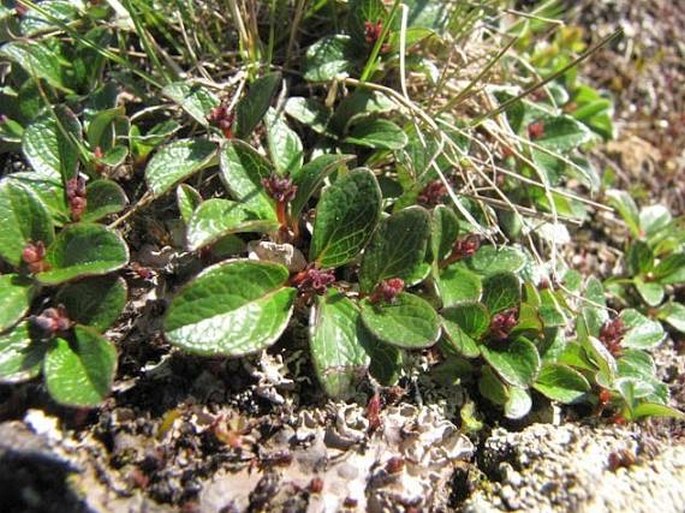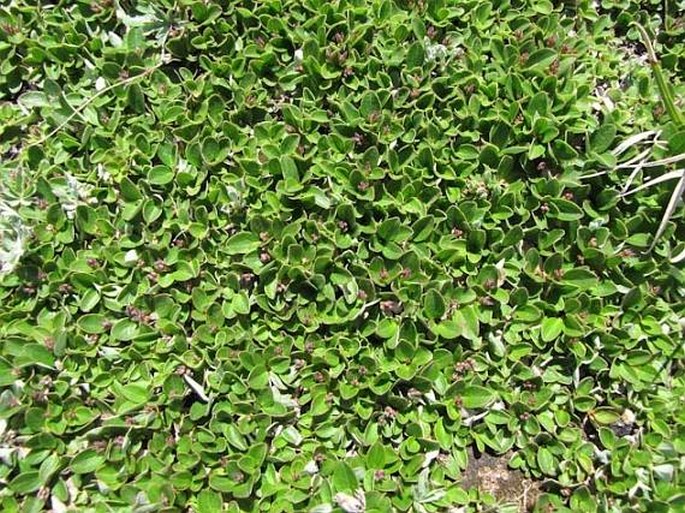Syn.: Salix aemulans Seem., Salix reticulata var. nana Andersson, Salix reticulata subsp. nivalis (Hook.) Á. Löve, D. Löve et B. M. Kapoor, Salix reticulata var. nivalis (Hook.) Andersson, Salix reticulata var. saximontana (Rydb.) Kelso, Salix saximontana Rydb., Salix vestita var. nana Hook.
Family: Salicaceae Mirbel

Distribution: Montane species of the west of North America, found from British Columbia and Alberta to eastern California and north of New Mexico.
Ecology: Grows on rocky slopes, mountain ridges, shores of mountain lakes in elevations from 1900 to 4000 m. Blooms from June to August.

Description: Very low, about 1-4 cm high shrub, dioecious, growing in colonies. Branches greyish brown; bark leathery, folded into ridges. Leaves alternate, deciduous, leathery, elliptical, 6–22 × 4–15 mm, upper surface conspicuously veined, dark green, underside pale green, petioles 2–10 mm long, margins smooth. Erect catkins appearing after the leaves; male catkins 7–19 mm long, bearing 6–11 flowers, densely spaced, 2 stamens, 1 bract; female catkins 7–21 mm long, 4–17 flowers, not as dense, bracts 1–2 mm long, yellow brown or pink. Fruit is a capsule, 4–5 mm, woolly, seeds with fine white hairs.
Threat and protection: Listed as rare, threatened and endangered in California.


These images were taken in Canada, Alberta, Plateau Mountain Ecological Reserve (by Karel Bergmann, July 2011), and Alberta, Jasper NP, Edith Cavell Meadows; Banff NP, Parker Ridge and Sentinel Pass (by Alena Vydrová and Vít Grulich, July 2007).


